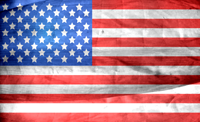HOW TO TEACH UNDER TRUMP
Since it became obvious that Donald Trump would win the Republican nomination, American educators have faced a unique problem: How to teach under Trump? From his demeaning comments about women to his scathing generalizations about Mexican Americans and Muslim Americans to his bullying of a reporter with a disability, Trump’s arrival on the political scene has raised new challenges for educators. The Clinton campaign even attempted to capitalize on these challenges in their emotionally charged “Role Model” campaign advertisement. Now, as the President Elect prepares to officially take office, educators, even those who simply opted not bring the 2016 campaign into the classroom, are again faced with the “how to teach under Trump” dilemma.
EDUCATORS RESPONSES TO THE 2016 ELECTION CAMPAIGN
During the 2016 election campaign, many schools, school districts and individual teachers decided to simply modify their curriculum. Despite the fact that teaching students about the political system is required and election years are usual embraced as a “teachable moment,” with a presidential candidate prone to making sexist, racist and sometimes simply outrageously offensive or misleading remarks, many educators felt that it was best to not focus on the election at all. Debi Koch, an elementary teacher in Federal Way School District in Washington, worried, “Some of the quotes are extreme. Some of the back and forth reactions on how they are responding to the other candidate are not as professional. It’s a little bit awkward for teachers to cover things that are not polite.” (1) Koch was not alone. Across the nation, educators were wondering how to explore the election without bringing its inappropriate content into the classroom. Some teachers, however, did more than fret about how to talk about the election without introducing opinions or ideas inappropriate for children and teens.
In New York City, teachers were reminded that in accordance with district policies they must remain entirely “neutral” in the classroom, but not everyone chose to comply. In San Francisco, the local teacher’s union went a step further and published what would prove to be a contentious lesson plan that referred to Trump as a sexist and racist. On a national level, 10 former state and national Teachers of the Year signed a letter expressing similar sentiments: “Donald Trump has mocked and mimicked the disability of a reporter — a form of bullying that no teacher would accept. He has coyly urged the assassination of his rival. He has disrespected the sacrifice of a military family who lost their son. He has cloaked hatred and discrimination, the most un-American of values, in a false patriotism. His vision of America is not a unified country based on common values; rather it is a separate and unequal country based on race, gender, ethnicity and religion. We believe the threat posed by Mr. Trump is too glaring to ignore.” The debate about how to teach under Trump that first emerged during the election, however, is now here to stay or at least, here to stay for the next four years.
How to Teach Under Trump While Under Surveillance
Don’t kid yourself. If you’re a teacher in a contemporary classroom, especially at the high school or college level, what you say may travel. Even if you have a no-cellphone policy, students frequently record (with or without permission) lessons and lectures. While they usually do so because they want to return to the material, at times, recordings are used to put educators under surveillance. This is precisely what happened to Olga Perez Stable Cox, a psychology professor at Orange Coast College in Orange Coast College in Costa Mesa, California last fall. A student in her class recorded a lecture in which she referred to Trump as racist and Vice President-elect Mike Pence as “one of the most anti-gay humans in the country. She also told her students that the nation is as divided now as it was “in Civil War times.” When the lecture went viral, Professor Cox went into hiding. The lesson learned in this case is clear: Educators, everyone is watching. The question is how to proceed with caution and with the best interest of America’s students in mind?
BULLYING: HOW TO TEACH UNDER TRUMP
 In recent years, anti-bullying education has become a key part of school curricula nationwide. With Trump in office, however, many educators are worrying that efforts to stamp out bullying may become increasingly difficult. The problem is simple. The President Elect has a tendency to engage in verbal exchanges that look a lot like the bullying behaviors that educators prohibit in the classroom, at school and online. Shortly after Trump’s election, Emily Bazelon, a staff writer for the New York Times and the author of Sticks and Stones, a book about teen bullying, reflected on the nation’s pending dilemma:
In recent years, anti-bullying education has become a key part of school curricula nationwide. With Trump in office, however, many educators are worrying that efforts to stamp out bullying may become increasingly difficult. The problem is simple. The President Elect has a tendency to engage in verbal exchanges that look a lot like the bullying behaviors that educators prohibit in the classroom, at school and online. Shortly after Trump’s election, Emily Bazelon, a staff writer for the New York Times and the author of Sticks and Stones, a book about teen bullying, reflected on the nation’s pending dilemma:
In the last few years, I’ve traveled the country to talk about bullying, as the author of a book on the topic. Parents often ask about the impact on kids when they see celebrities or leaders treat other people badly or fail to stand up to bigotry and prejudice. There’s no way to measure the precise effect. But kids are attuned to cultural expectations. They absorb shared ideas about what behavior is permitted and what is intolerable. If the president of the United States and his top officials wave away racism and harassment, or traffic in prejudice themselves, kids are at risk of getting the message that this stuff is O.K. after all. That should be obvious to anyone in elected office.
Bazelon, however, also urged readers to take action: “At this moment, local civil institutions and all of us, in our communities, are being put to a test. We have to show heart and conviction. We have to ensure that our kids learn the values some leaders have forgotten.” (2) But again, how exactly should educators do this?
DIVERSITY: HOW TO TEACH UNDER TRUMP
Since Trump’s election, hate crimes have been on the rise nationwide. The Chronicle of Higher Education has started a running tally of college- and university-based hate crimes and the New York Times now runs a This Week in Hate column. While much of the news has focused on the college-based hate crimes and crimes in the general community, K-12 schools have not been immune to the recent rise in hate. In late November, at Collins Hill High School in Gwinnett County, Georgia, swastikas and racist slurs where were spray-painted on school buildings and sidewalks along with the name, Trump and a similar act of violence unfolded at Wilbur Cross High School in New Haven, Connecticut. Many American teachers believe that teaching diversity will be more important now than ever before.
Melanie Miller, a substitute teacher with the New York City DOE, visited dozens of local schools following the election: “I’m in a new school and new district almost everyday. In November and December, I got a survey of students’ reactions. Most were devastated and some were concerned–about deportation and harassment.” Miller added, “We need to talk about hate crimes–to educate students on what they are and how to report them–and we need to look back into history too. You don’t have to collaborate. There are lots of examples of resistors–they were in Germany in the 1930s and 1940s, and a lot of those resistors were educators too. I’m not saying that we’re in that situation, but I think it’s important to look for examples of people resisting racial and religious violence and to ensure these examples are foregrounded in today’s curriculum.”
POLITICS: HOW TO TEACH UNDER TRUMP
 Perhaps, the biggest challenge facing educators under Trump will be how to teach about politics and the American political system. After all, how should one explain to a group of fourth graders or even tenth graders that the presidential candidate who received the most votes did not in fact end up taking office? Does one discuss regionalism? If so, how does one do this without reasserting stereotypes of blue versus red states or rural versus urban areas? What is clear is that educators nationwide will need to learn how to have productive conversations in increasingly polarized classrooms. In Fall 2016, the Southern Poverty Law Center published an article on the topic, emphasizing the importance of “Teaching students what polarization is and what social forces contribute to it will better prepare them for the democracy they will inherit.” Specifically, the article calls for educators to teach about ideology and income inequality while actively working to undermine “affective polarization in the classroom.” Of course, this means working to both steer students away from the sexist and racist rhetoric for which Trump is known and disparaging comments about Trump’s supporters (for example, Clinton’s dismissal of Trump’s supporters as “deplorables”). In short, educators are being called upon to rise above the noise, even in sharply divided classrooms, and find away to put civic education back in the spotlight. Without their efforts, America can expect to see more polarized and dirty politics in the decades to come.
Perhaps, the biggest challenge facing educators under Trump will be how to teach about politics and the American political system. After all, how should one explain to a group of fourth graders or even tenth graders that the presidential candidate who received the most votes did not in fact end up taking office? Does one discuss regionalism? If so, how does one do this without reasserting stereotypes of blue versus red states or rural versus urban areas? What is clear is that educators nationwide will need to learn how to have productive conversations in increasingly polarized classrooms. In Fall 2016, the Southern Poverty Law Center published an article on the topic, emphasizing the importance of “Teaching students what polarization is and what social forces contribute to it will better prepare them for the democracy they will inherit.” Specifically, the article calls for educators to teach about ideology and income inequality while actively working to undermine “affective polarization in the classroom.” Of course, this means working to both steer students away from the sexist and racist rhetoric for which Trump is known and disparaging comments about Trump’s supporters (for example, Clinton’s dismissal of Trump’s supporters as “deplorables”). In short, educators are being called upon to rise above the noise, even in sharply divided classrooms, and find away to put civic education back in the spotlight. Without their efforts, America can expect to see more polarized and dirty politics in the decades to come.
CONTRIBUTOR: CAIT ETHERINGTON, JANUARY 6, 2016
1. “Why Some Washington Teachers Won’t Teach the 2016 Presidential Election,” K5 News, http://www.king5.com/news/local/why-some-wa-teachers-wont-teach-about-the-2016-presidential-election-/312240052
2. Emily Bazelon, “Bullying in the Age of Trump,” New York Times, 16 November 2016, http://www.nytimes.com/2016/11/16/opinion/bullying-in-the-age-of-trump.html?_r=0
Additional Reading
- Tuition-free College in New York
- Virtual High Schools Gain Credibility
- 2016 Top Education News Stories
- Transgender Children New School Policies
- Choosing a School, College, and Degree Program for Teaching
- One school api test
Interview
Related q/a
- Hello! I am curious to know What courses one should take to become a Warfare Historian?And then the degree requirements to teach for this as well please. Any information or insight would be greatly appreciated. Thanks????
- I would like to become a foreign language teacher, and I was wondering if it was possible that I could teach multiple languages at one school?? I most likely would want to teach Spanish and French, and I know I can be certified in both, but can I teach both at the same public high school? I know there are teachers in my public high school that teach more than one course, like at different periods throughout the day, but not any language teachers.
- Hello! I am curious to know What courses one should take to become a Warfare Historian?And then the degree requirements to teach for this as well please. Any information or insight would be greatly appreciated. Thanks????
- I’ve done my Master’s in Computer Science and Engineering, and I’m interested In Teaching College Level Courses




